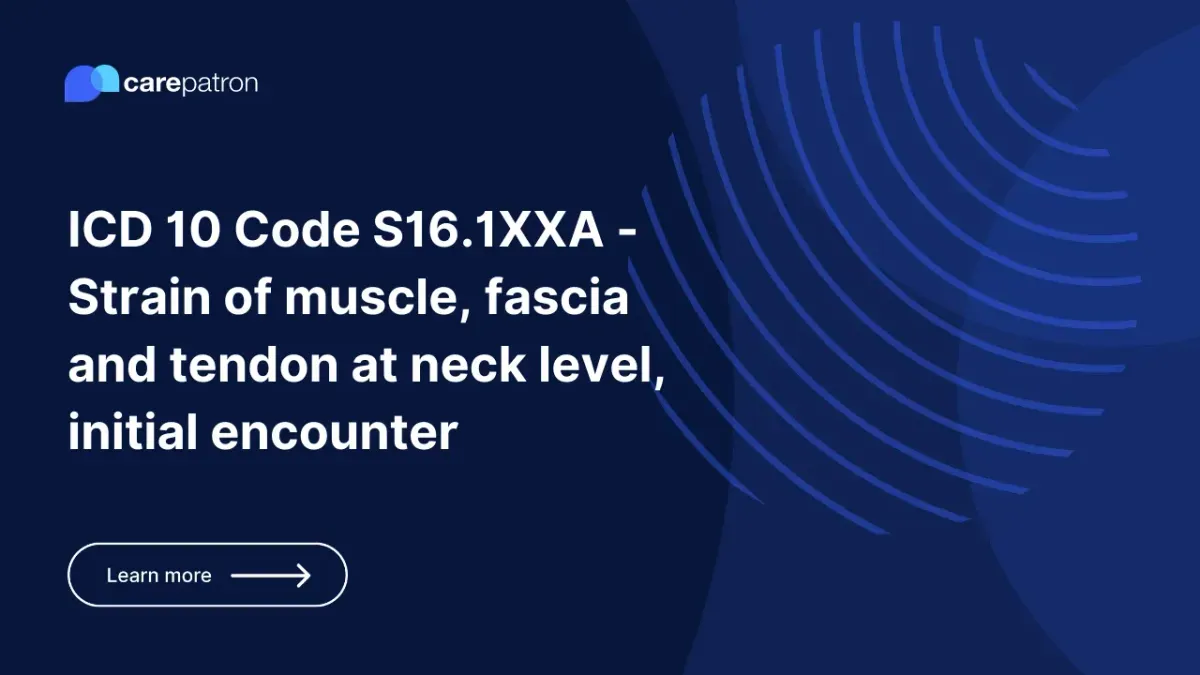
S16.1XXA – Strain of muscle, fascia and tendon at neck level, initial encounter
Learn all about the ICD-10-CM code S16.1XXA, which is for the strain of muscle, fascia, and the tendon at the neck level during the initial encounter, including what its clinical description is, if it’s billable or not, what its synonyms are, what other ICD codes are related to it, and a few FAQs.
Use Code
Commonly asked questions
Yes, this ICD-10 code is billable.
It means that a patient has strains in the neck-level muscles, fascia, and tendons, and it’s the first time a certain provider is handling them.
More often than not, a neck-level strain just needs rest. Sometimes, a compress may be applied, like ice or bandages. If the clinician thinks it’s necessary, then can add exercise and physical therapy to the treatment.
EHR and practice management software
Get started for free
*No credit card required
Free
$0/usd
Unlimited clients
Telehealth
1GB of storage
Client portal text
Automated billing and online payments
